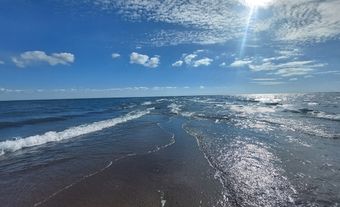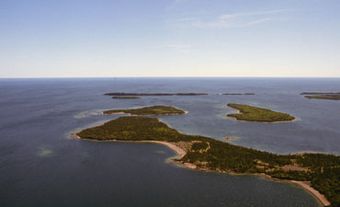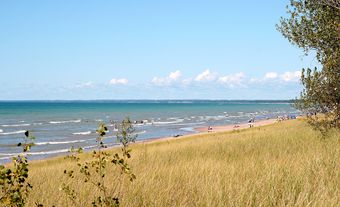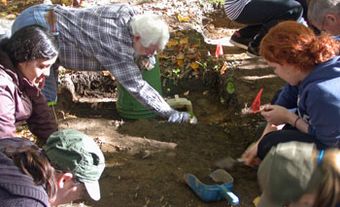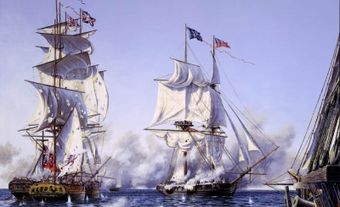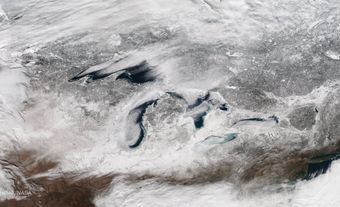Geography
The lake drainage basin measures 58,800 km2 in area. It is home to over 11 million people in Canada and the US. Buffalo, New York; Erie, Pennsylvania; Toledo and Cleveland, Ohio, are large, heavily industrialized cities on the US side. There are no similarly sized communities on the Canadian shore.
Geology
Like most of the other Great Lakes, Erie occupies a glacier-deepened river drainage system. In these places, the less resistant shales and limestones of the Palaeozoic rock column were differentially eroded to create the huge elongated depressions in which the lakes formed. These Pleistocene glaciers, hundreds of metres thick, periodically occupied much of the basin and left behind extensive deposits of clay and silt, which now comprise much of the rapidly eroding shoreline. More resistant dolomites form the shoreline only in the extreme eastern and western portions of the lake.
History
The north shore was frequented intermittently by the Neutral Confederacy who lived around the Niagara Peninsula and along the Niagara Escarpment. Étienne Brûlé was likely the first European to see the lake. The decisive naval battle at Put-in-Bay was fought on the lake during the War of 1812. Called Lac du Chat by the French explorers, the lake came to be called after the Erie, an Iroquoian tribe inhabiting the south shore.
Environmental Concerns
During the 1960s and early 1970s, Lake Erie was declared dead. Excess nitrogen and phosphorus in the lake, primarily from detergents and agricultural fertilizers, accelerated the growth of phytoplankton such as algae. The algae grew at the lake’s surface and limited the sunlight and oxygen available to wildlife at the bottom. This wildlife, such as the burrowing mayfly and lake whitefish, disappeared or declined. In 1972, the Great Lakes Water Quality Agreement helped restore Lake Erie, though it still experiences annual dead zones.
Fisheries and Recreation
Despite pollution and lamprey infestations, the lake supports the largest commercial fishery in the Great Lakes, consisting mainly of yellow perch. Warm summers, excellent beaches and well-preserved coastal marshes make Erie a favourite rendezvous for summer recreationists and wildlife enthusiasts (see Point Pelee National Park). Bird-watchers flock to these areas to take advantage of the lake's position on the major migration routes. Although Erie freezes over most winters, it remains an important part of the St. Lawrence Seaway system.

 Share on Facebook
Share on Facebook Share on X
Share on X Share by Email
Share by Email Share on Google Classroom
Share on Google Classroom
